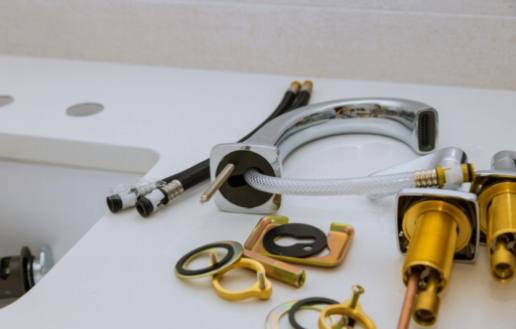Ensuring access to clean and safe drinking water is essential for any modern home, and installing a DIY water filtration system can be a cost-effective and practical solution. However, it's important to approach the installation process with caution and attention to detail in order to avoid common mistakes that could impact the system's effectiveness. Understanding water quality, choosing the right filter, following installation instructions, monitoring pressure levels, and addressing maintenance and troubleshooting issues are all crucial elements to consider when embarking on a water filtration project. In this article, we will explore the common mistakes to avoid when installing DIY water filtration systems in order to ensure optimal performance and peace of mind for you and your family.

Understanding Water Quality and Filter Compatibility
Water quality can vary greatly depending on location, and it's essential to have a clear understanding of any contaminants or impurities present in your water supply. This will help you determine the type of filtration system you need to effectively purify your water and ensure the health and safety of your household. Additionally, understanding the compatibility of different filters with your water source will ensure that you choose the right filter for your specific needs, maximizing the effectiveness of your filtration system.
Choosing the Right Filter Size and Type for Your Needs
When it comes to DIY water filtration systems, one of the most important steps is choosing the right filter size and type for your specific needs. This involves understanding the water quality in your area and determining which contaminants you need to remove. It's essential to research and compare different filter options to find the best one for your home. Making the right choice in filter size and type can ensure that your water is effectively and efficiently filtered, providing you with clean and safe drinking water.
Following Installation Instructions and Avoiding Improper Setup
Following installation instructions and avoiding improper setup is crucial when installing DIY water filtration systems. It is important to carefully read and understand the manufacturer's installation guidelines to ensure that the system is installed correctly and functions properly. Improper setup can not only lead to the system not working as intended but can also cause damage to the unit or the plumbing in your home. Taking the time to follow the instructions and ensuring that the setup is done correctly will ultimately save you time and headaches in the long run.
Monitoring Pressure Levels and Avoiding DIY Modifications
Pressure levels can indicate issues with the system, such as clogs or leaks, and should be checked regularly to ensure the system is functioning properly.
DIY modifications to the water filtration system can lead to inefficiencies and potential damage to the system. It is important to follow the installation instructions provided by the manufacturer and refrain from making any unauthorized alterations to the system.
By monitoring pressure levels and avoiding DIY modifications, homeowners can ensure that their water filtration system operates at optimal efficiency and effectively removes contaminants from their water supply.
Regular Maintenance, Timely Filter Replacements, and Sanitization
Regular maintenance, timely filter replacements, and sanitization are essential aspects of ensuring the efficiency and effectiveness of DIY water filtration systems. With regular use, filters can become clogged and less effective at removing contaminants from the water. To maintain optimal performance, it is important to adhere to the manufacturer's recommendations for replacing filters at regular intervals. Additionally, sanitizing the filtration system can help to prevent the buildup of bacteria and other harmful pathogens, ensuring that the water remains clean and safe for consumption. By staying on top of maintenance and replacement schedules, homeowners can ensure that their water filtration system continues to provide high-quality, clean water for their household needs.
Addressing Leaks, Securing Connections, and Ensuring Proper Sealing
Leaks can lead to wasted water, damage to the surrounding area, and a decrease in water pressure. It is important to carefully inspect all connections and fittings to ensure they are secure and properly sealed. Inadequate sealing can result in a loss of water pressure and allow unfiltered water to bypass the filtration system. Additionally, addressing leaks and ensuring proper sealing will contribute to the overall efficiency and longevity of the water filtration system.
Testing Water Post-Installation and Troubleshooting Common Issues
Testing the water post-installation will help to verify that the filtration system is removing contaminants and providing clean, safe water for your household.
Common issues that may arise during the post-installation testing process include a decrease in water pressure, strange odors or tastes in the water, or the presence of particles or sediment in the water. Troubleshooting these issues may require adjusting the filter settings, checking for leaks or loose connections, or replacing old or clogged filters.
It is advisable to perform a water quality test using a water testing kit or by sending a sample to a certified laboratory. This will help to determine if any contaminants are still present in the water and if the filtration system is effectively removing them. It is also important to monitor the water pressure and flow rate to ensure that the system is functioning optimally.
If any issues are identified during the testing process, it is crucial to troubleshoot and address them promptly to avoid any potential health risks or water quality issues. This may involve referring to the manufacturer's instructions, seeking professional assistance, or replacing faulty components.
Regular testing of the water post-installation and promptly addressing any issues that arise will help to ensure that your DIY water filtration system continues to provide clean, safe water for your home.
